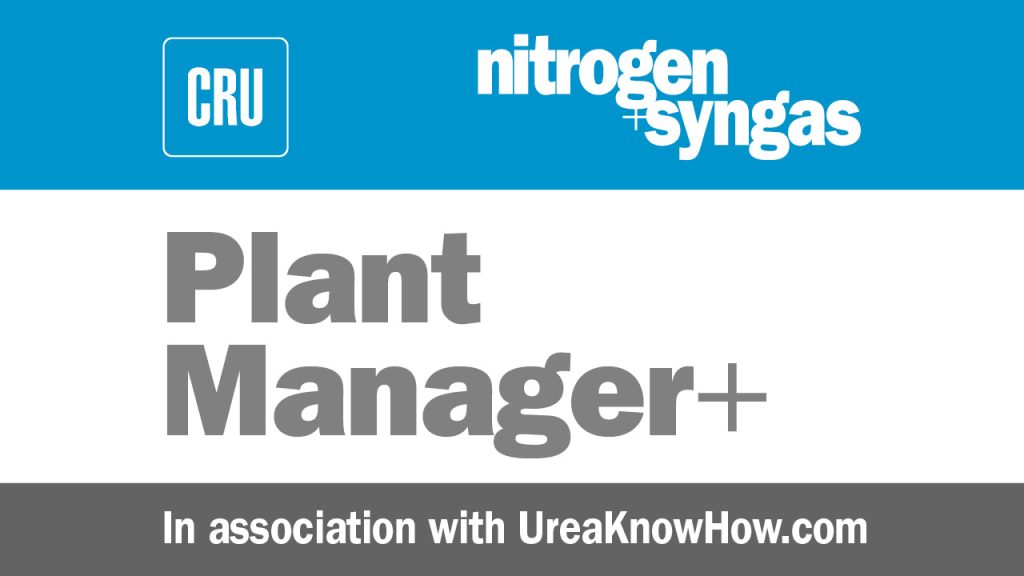Nitrogen+Syngas 386 Nov-Dec 2023

30 November 2023
Problem No. 70: Corrosion at unexpected locations like in dry CO₂ pipelines

Le Hoang Viet of PetroVietnam Ca Mau Fertilizer in Vietnam kicks off this round table discussion: CO2 and NH3 are raw chemicals that react to produce urea. CO2 is compressed using a CO2 compressor. As per the design, carbon steel is used as the material of construction for pipelines that contain hot CO2 in the discharge of each stage of the compressor. Conversely, stainless steel, usually 304L, is employed for pipelines containing cooled CO2 downstream of the interstage coolers.
Normally hot CO2 does not corrode carbon steel. However, in instances of heat loss in pipelines, CO2 can cause corrosion in carbon steel. Susceptible locations are often vents and drains in these pipelines (as shown in the photo above). This issue arose in our CO2 piping system and was resolved by upgrading these pipes to 304L stainless steel.
Mark Brouwer of UreaKnowHow.com in the Netherlands responds: In “dry” CO2 carbon steel is typically applied, and for CO2 saturated with water stainless steels are typically applied. You are right that in dry CO2 lines with heat sinks (cold spots) corrosion of carbon steels can and do occur.
Usman Ali Hashmi of Parco in Pakistan adds: The formation of carbonic acid might be the main culprit.
Muhammad Adnan Hanif of Fauji Fertilizer Company in Pakistan shares his experience: In this case, the main culprit is carbonic acid, which is produced by CO2 in the presence of water, especially at higher pressures (due to the increase of CO2 solubility in water).
Typically water is present in vapour form at equilibrium conditions in the CO2 at the inlet of each stage of the mult-stage compressor. This water condenses and forms carbonic acid when the CO2 gas is compressed in each stage and subsequently cooled in a cooler.
In early designs (1980s), the pipeline material was carbon steel, especially before the intercooler segments, and stainless steel 304 for lines downstream of the intercoolers. However, in new plants all lines are preferably stainless steel 304 to eliminate the corrosion issue as carbonic acid has only a very mild effect on stainless steels in comparison to carbon steels.
Mark comes back with some suggestions: This example shows the need to pay proper attention to all kind of failure modes and that feedback on actual experiences is important. Proper continuous leak detection for CO2 leaks in the CO2 feed section of urea plants is also important.
Appearance or morphology of carbonic acid corrosion damage:
Carbonic acid corrosion can manifest in various forms, depending on the specific equipment or infrastructure affected. Some common appearances of carbonic acid corrosion include:
Uniform or general corrosion: This form of corrosion appears as a gradual, overall thinning of the affected material. It occurs when the carbonic acid reacts with the surface, resulting in a relatively even loss of material over a large area. Uniform corrosion may lead to a reduction in the structural integrity of the equipment.
Pitting corrosion: Pitting corrosion appears as localised, small cavities or pits on the surface of the material. Carbonic acid can initiate the formation of pits by attacking localised areas more aggressively. Pitting corrosion is particularly concerning as it can penetrate deep into the material, leading to significant damage and potential failure.
A similar situation of corrosion at unexpected locations can be found in gas pipelines with ammonium carbamate in urea plants. When ammonium carbamate gas condenses at cold spots or heat sinks, the condensed ammonium carbamate liquid contains insufficient oxygen and active corrosion occurs with relatively high corrosion rates. This is also called condensation corrosion. Also here the remedy is to apply proper tracing and insulation to assure a higher temperature than the dew point. Higher alloy materials should be selected and regular corrosion inspections should be performed.
For more background information about carbonic acid corrosion: https://matintegrity.wixsite.com/inspection-corrosion/post/blast-furnace-gas-scrubber-carbonic-acid-corrosion
This series of discussions is compiled from a selection of round table topics discussed on the UreaKnowHow.com website. UreaKnowHow.com promotes the exchange of technical information to improve the performance and safety of urea plants. A wide range of round table discussions take place in the field of process design, operations, mechanical issues, maintenance, inspection, safety, environmental concerns, and product quality for urea, ammonia, nitric acid and other fertilizers.






